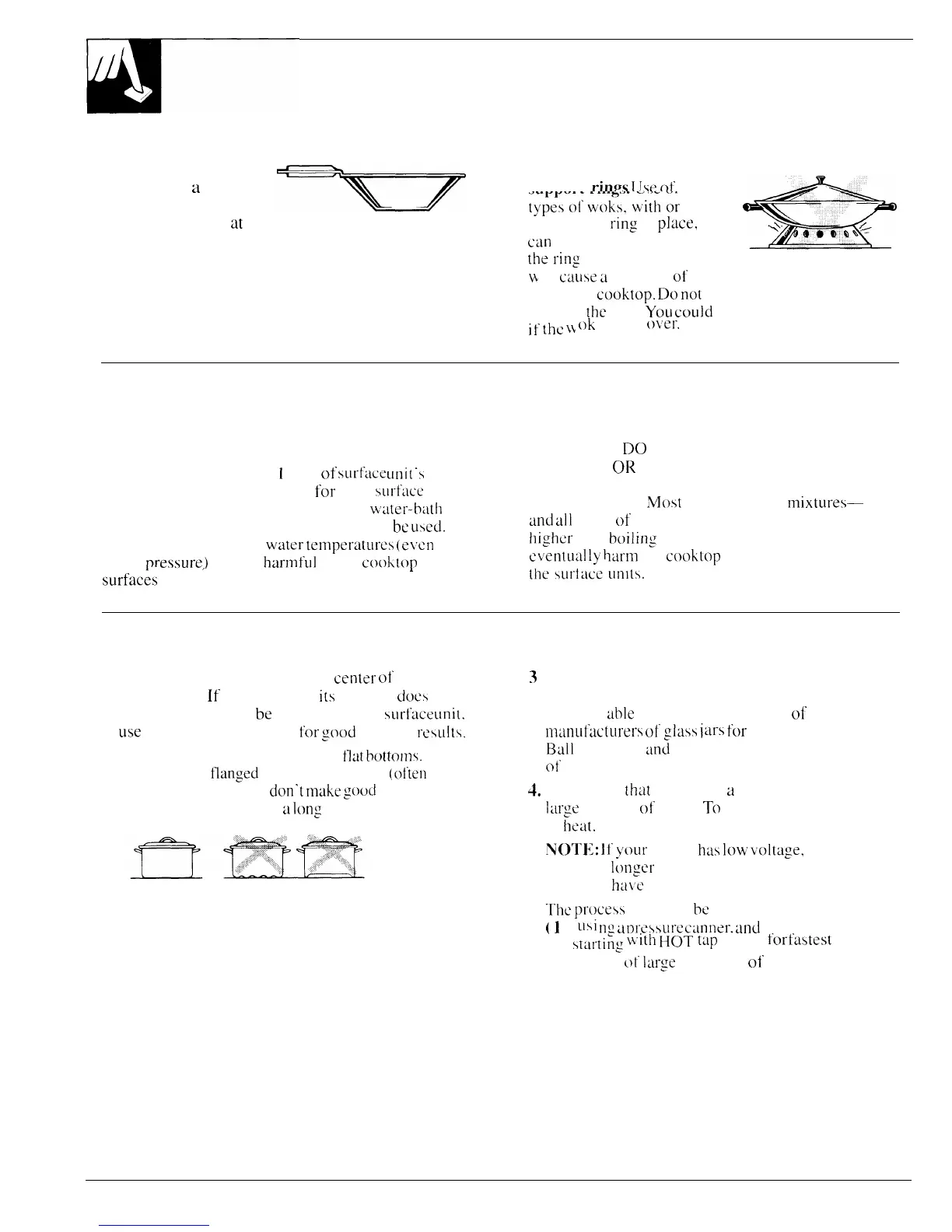SURFACE COOKWARE TIPS
(continued)
Wok Cooking
We recommend that
Do not use woks that have
you use only
a
support rings
[Jse
of these
flat-bottomed wok.
~
typef.(~.lttor
They are available
at
without the
ring
in
place,
your local retail store.
can
be dangerous. Placing
*
thering over the surface unit
w
ill
cause
a
build-up
of
heat that will damage the
porcelain
cooktop.
DO
no{
try to use such woks
without
the
ring.
YOLI
could
be seriously burned
j
~
~hc
~Y
ok
tipped
~Jk’el”.
HOME CANNING TIPS
Canning should be done on surface units only.
HOWEVER.
DO
NOT USE LARGE DIAMETER
Pots that extend beyond
1
inch of
sLIrfkx
units
drip pan are not recommended
for
most
~urface
cooking. However, when canning with
wuter-ba(h
or
pressure canner, larger-diameter pots may
be
used.
This is because boiling
water
temperaturc~
(e~rcn
under
messure)
are not
hw”mfu]
to the
cooktop
,
surfac&
surrounding the surface units.
,
CANNERS
OR
OTHER LARGE DIAMETER
POTS FOR FRYING OR BOILING FOODS OTHER
THAN WATER.
JMosi
syrup or sauce
mixtures—
tirrd
all
types of frying—cook at temperatures much
highur
than boilin: water. Such temperatures could
e~’en~ual
ly
harm
the
cooktop
surfaces surrounding
Observe the Following Points in Canning
1. Be sure the canner fits over the
center
of
the
3
. .
surface unit. If your range or
ils
location dots not
allow the canner to
be
centered on the
sLIrf’ace
Llrrlt.
Llse smaller-diameter pots
for
good
canning
resultf.
2. For best results, use canners with
tlat
bottom$.
Canners with
flanged
or rippled bottoms
(often
found in enamelware) don.t
make
good
contact with
4.
the surface unit and take
a
long
time to boil water.
Flat-bottomed canners are recommended.
When canning, use recipes and procedures from
reputable sources. Reliable recipes and procedures
are avail
tible
from the manufacturer of your canner:
1?li111Llf2~ctL11-el-s
of
glass
jars
for
canning, such as
Ball and Kerr: and the United States Department
Of
Agriculture Extension Service.
Remember
that canning is
a
process that generates
large amounts of steam.
To
avoid burns from steam
or
heat.
be careful when canning.
~“OT~!:
~f
yrour
house
has
low
voltage.
canning
may take
longer
than expected. even though
direction
ha~c
been carefully followed.
The
proce~s
time will
be
shortened by:
(
1
)
LISi
Il:
d
P1”c’SSLII-e
CUIIIler.
and
(2)
~taIting
with
HOT
tup
water
for
fa$test
heating of
large
quantities of water.
10

